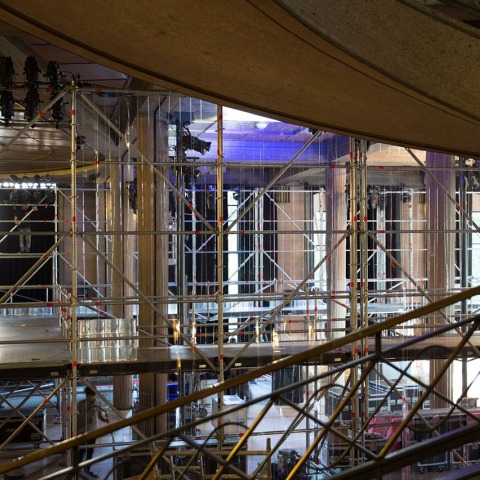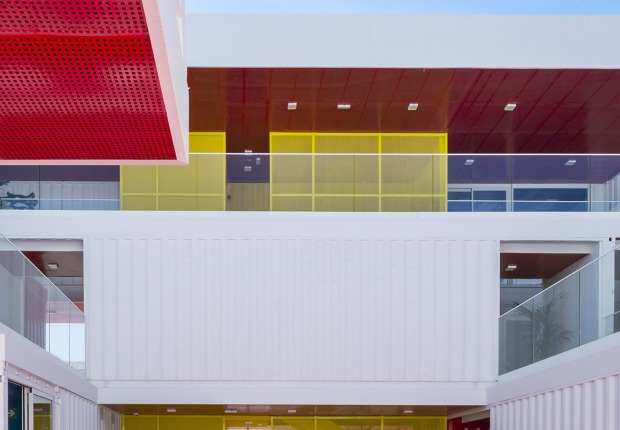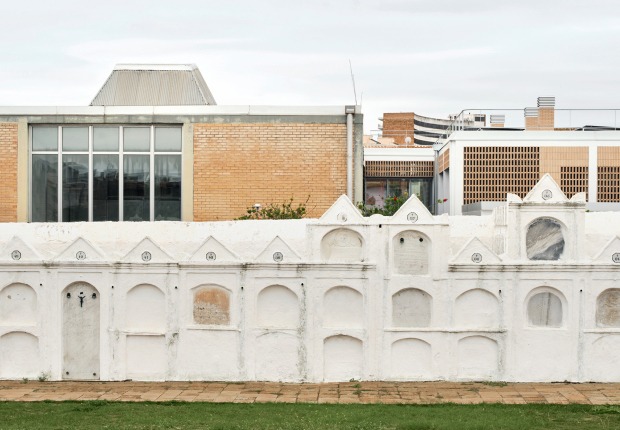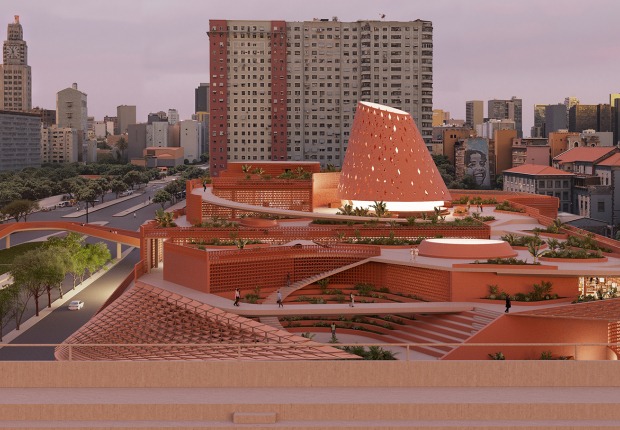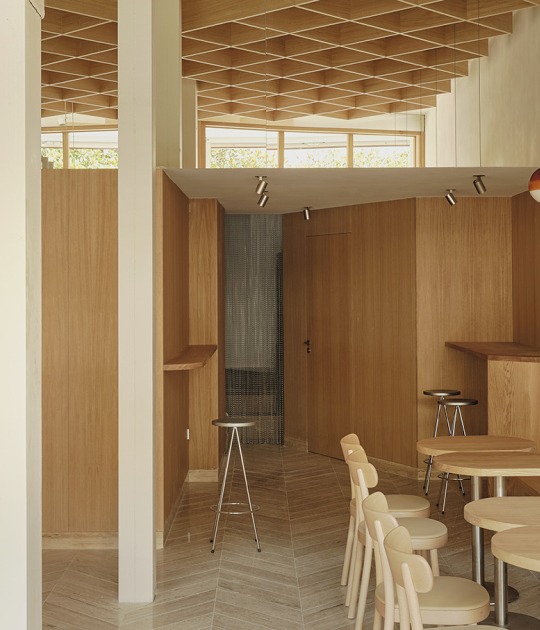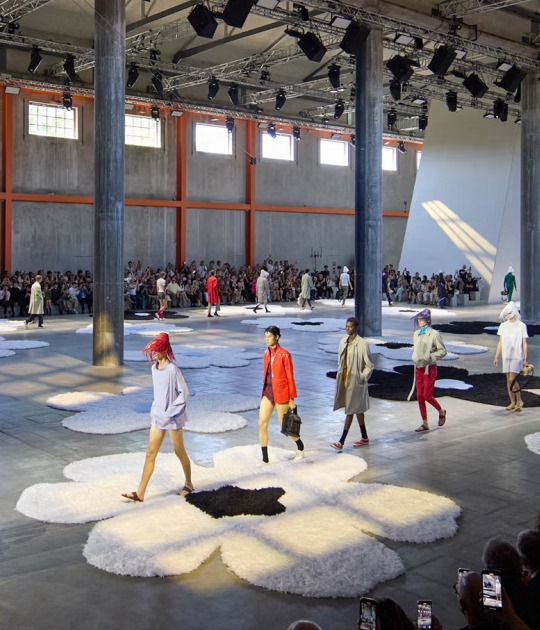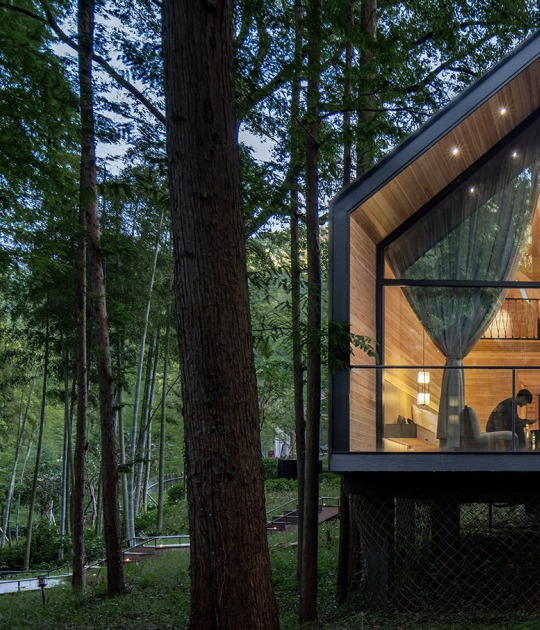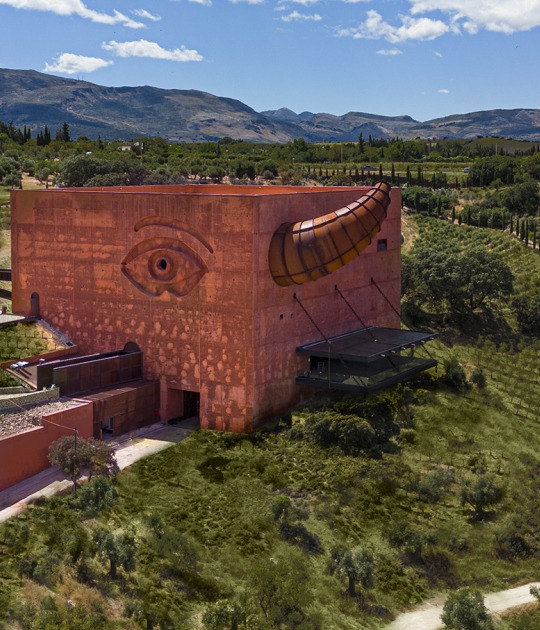The Miu Miu Club, a pop-up event by Prada and AMO, hosted a dinner, fashion show and several musical acts at the official CESE government offices in Paris on Saturday, July 4th. The show was inspired by the rich tradition and dark evocation of Parisian nightlife and included a special powder room dedicated to experiencing the first Miu Miu fragrance.
The Miu Miu Club offers an alternative environment for experiencing fashion and fragrance. Rather than promoting a quick view and fast departure, the space welcomes guests to spend the entire evening.
The temporary intervention was built in the grand hypostyle hall of Auguste Perret’s Palais d’Iéna, using scaffolding to create a room within a room. A series of lounges for the dinner were arranged below the structure, which later became the catwalk for the fashion show. The dance floor, with a scenographic DJ wall, was located in the centre and featured guest appearances by Miu Miu collaborator sound artist Frederic Sanchez, tech house DJ Craig Richards, American DJ and producer Seth Troxler, and Dutch DJ Cassy.
Inspired by the clubs from the early 90's, the Miu Miu Club referenced an underground and industrial atmosphere with strip lighting, metal grids, and PVC sheets.
MIU MIU TO STAGE A ONE-NIGHT-ONLY CLUB IN PARIS TO UNVEIL THE 2016 CROISIÈRE COLLECTION AND INTRODUCE THE FIRST MIU MIU FRAGRANCE
From the lavender hues of the Howling Cat, to the cabarets of Les Folies Bergères, to le jazz wafting from the caves of Montmartre, Paris nightlife thrives in the abstract, the secret, the seductive.
The scaffold supports a raised catwalk that runs the length of the hall following the rhythm of the architecture on which models parade overhead. Under the scaffolding a long series of lounges accommodate the guests both for dinner and conversation. Juxtaposed against the concrete structure of the Palais, the thin metallic profiles of the scaffold ring provide material contrast and plastic sheets define the exterior boundaries, creating a relaxed and casual environment. In contrast to temporal language of the set, white carpet-upholstered furniture lends a subtle sense of luxury. In keeping with the club atmosphere, the lighting is low and mysterious occasionally punctuated by lively signs in red and light blue neon. The center of the room is left open to provide a dance floor oriented towards a scenographic DJ wall.
The powder room is an intimate space, evocative of a ladies salon, for guests to experience Miu Miu’s first fragrance. Visitors are led through two mirrored corridors displaying images from the fragrance campaign featuring Stacy Martin and photographed by Steven Meisel. Glowing within the dimly lit hemicycle hall, the iconic dome and chandelier are faintly visible above the powder room. Enclosed by a ring of projection screens displaying subtly moving images, vanities, mirrors, banquets and poufs offer a space for small gatherings. White and blue carpet covers the floors and furniture and gold and mirrored accents create a soft environment. Fragrance bottles are arranged at each vanity, giving the opportunity to test the perfume, which highlights the joyful lily of the valley with the unexpected earthy undertone of Akigalawood®.
CREDITS.-
Author.- AMO.
Partner.- Ippolito Pestellini Laparelli.
Team.- Giacomo Ardesio, Giulio Margheri, Salome Nikuradze, Miguel Taborda, Cedric van Parys.
